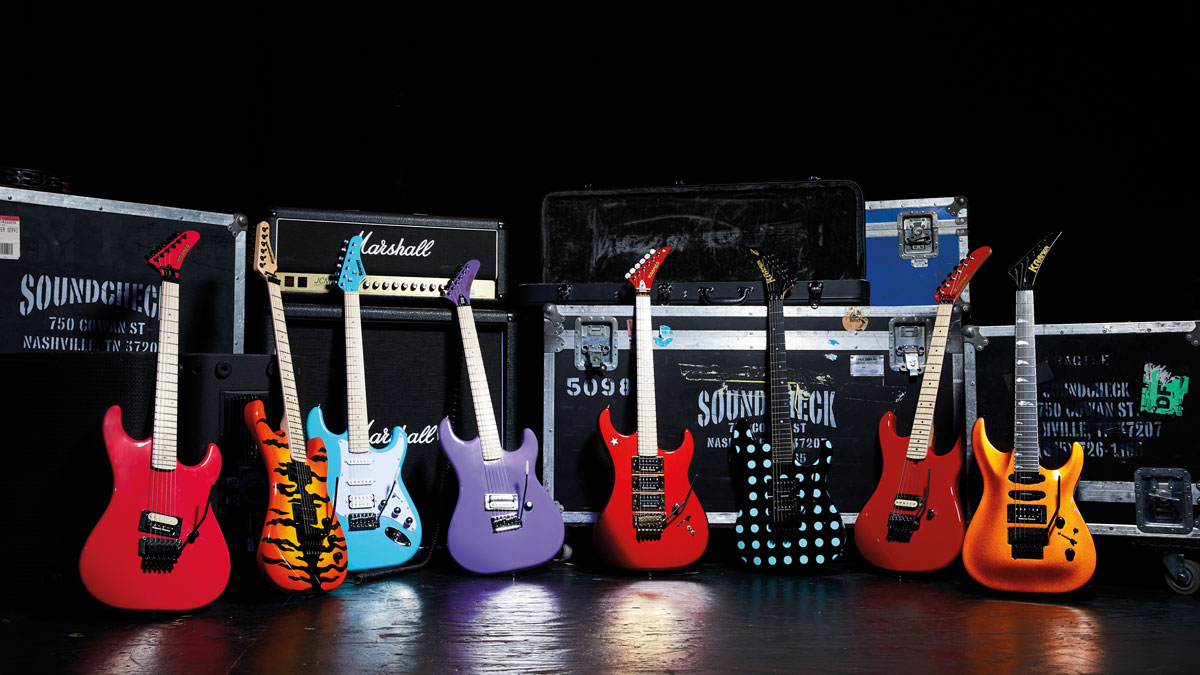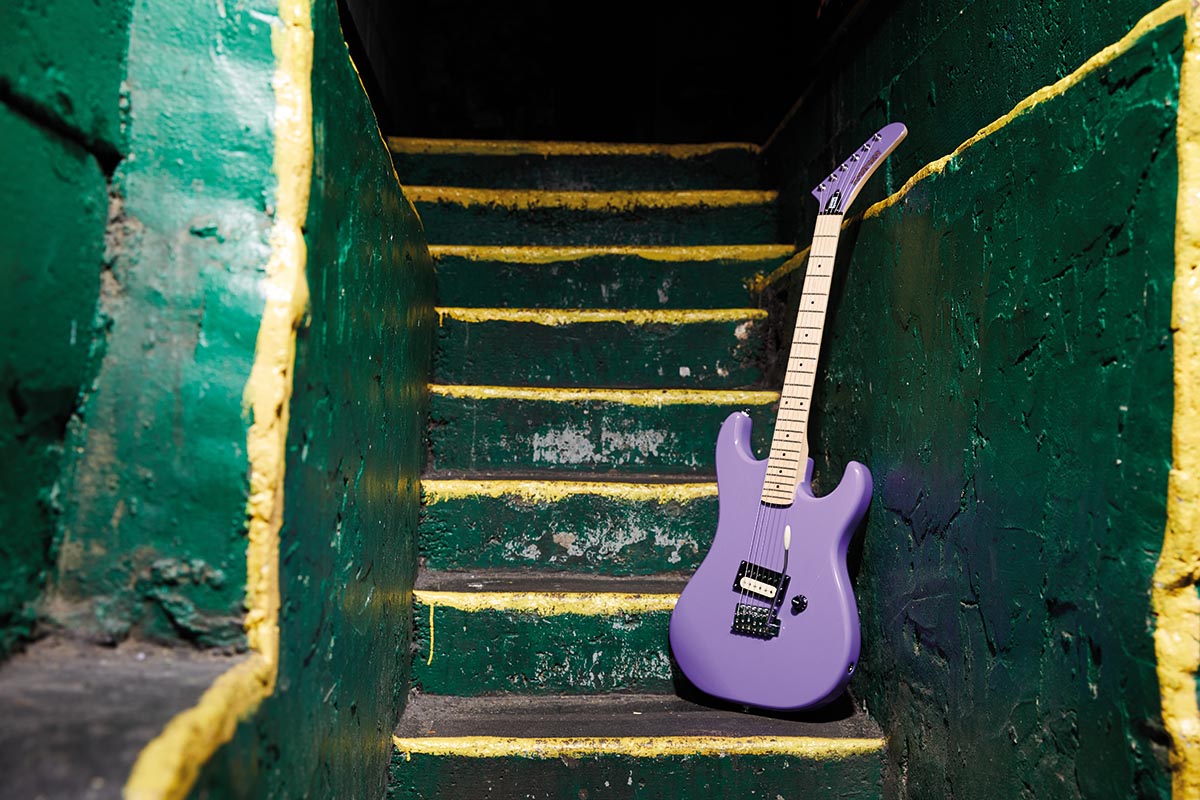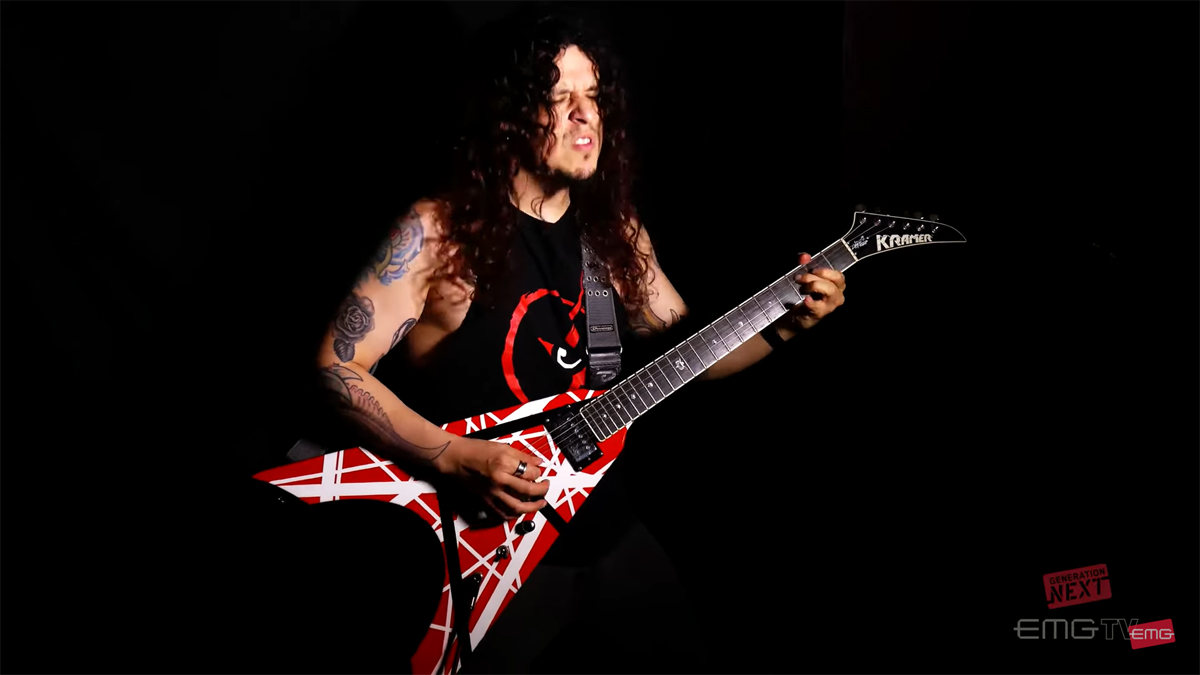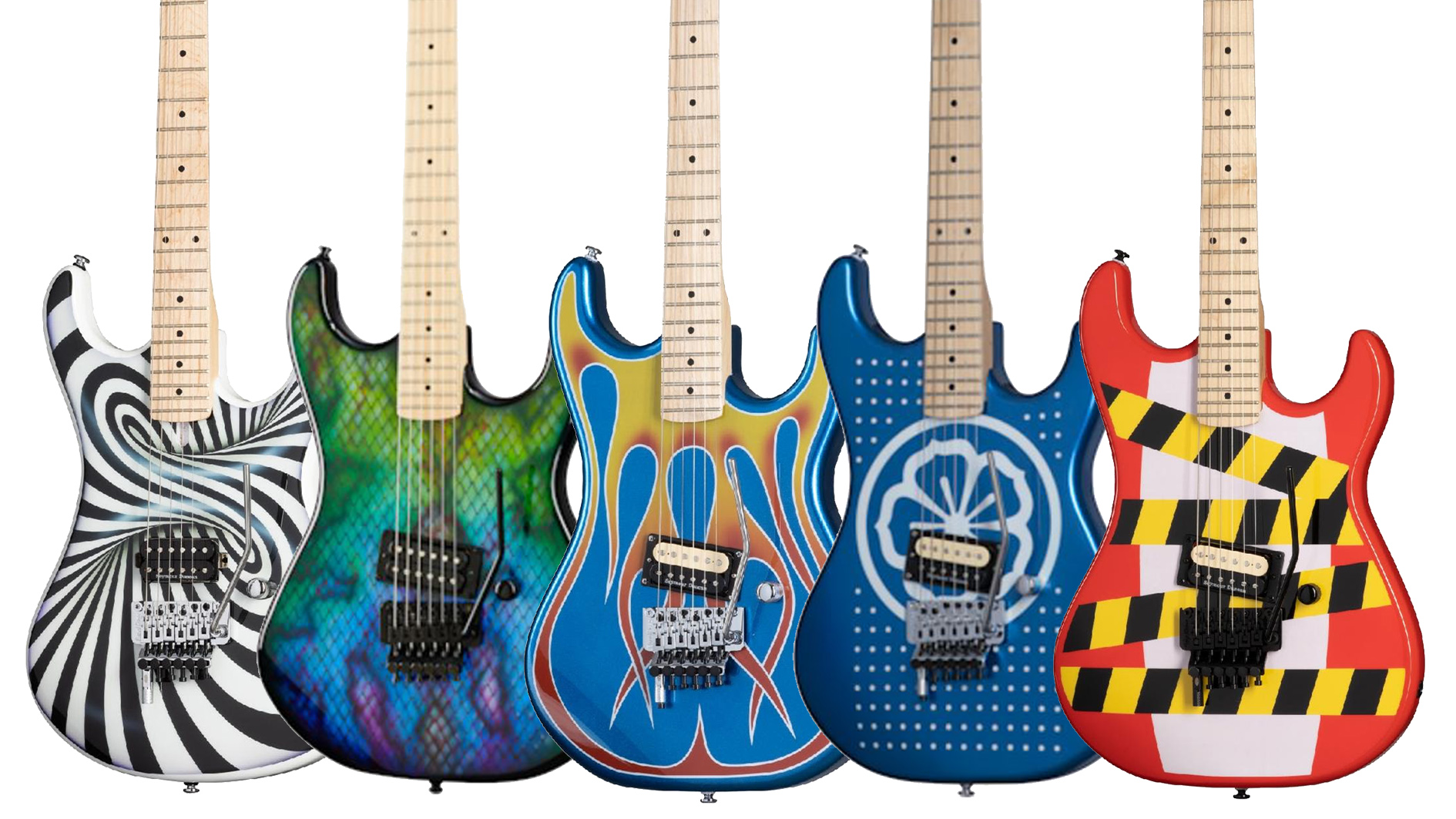The hard-rocking return of Kramer Guitars
The top dogs at the new (and improved?) Kramer Guitars are looking back to their hairspray heyday while simultaneously concocting ultra-modern axes for today’s shred royalty

Ever since Gibson went under new management in 2018, the company has been on a major hot streak. But while the Gibson and Epiphone lines have garnered much of the attention from players (as well as most of the splashy headlines from the press), it’s worth noting that these aren’t the only guitar brands in the company’s stable.
In 2020, Gibson officially announced the relaunch of Kramer Guitars, and true to that brand’s bold, flashy and, in every sense of the word, loud history, Gibson is bringing it back in a big way.
Late last year, the company unveiled the new Original and Modern Collections, which, respectively, reintroduce classic-but-updated models from Kramer’s '80s heyday, and also add in new creations designed with the 21st-century player in mind.
Which means that, once again, you can pick up streamlined, shred-ready guitars like the Baretta Special (equipped with a single humbucker and “banana” headstock) and a Pacer finished in iconic throwback Orange Tiger, but also the thoroughly modern Assault Plus (a progressive take on the Les Paul) and the radically contoured Nite-V.
What’s more, the company has extended that mix of classic and current to its line of new signature models, collaborating with Skid Row guitarist Dave “Snake” Sabo to bring his famous custom Snake Sabo Baretta to market for the first time ever; L.A. Guns/Sunbomb maestro Tracii Guns on the Gunstar Voyager, an updated take on the company’s early '80s star-shaped Voyager; and Peruvian shredder Charlie Parra on a razor-sharp offset-V Vanguard design.
The result is a range sure to thrill devoted Kramer diehards who grew up loving not only the unique look and sound of these instruments, but also the players – among them Eddie Van Halen, Bon Jovi’s Richie Sambora, the Cars’ Elliot Easton and Mötley Crüe’s Mick Mars – who used them. And for those who have never experienced a Kramer before? Get ready.
“There are big plans for Kramer, and we’re just getting started,” Gibson Brand President Cesar Gueikian says. Expanding on the focus of the Original and Modern Collections, he explains, “the Originals are the guitars that ignited hair-sprayed hard rock and metal heads all over the world in the '80s. And it’s a bit of a passion project for me because I love all of that.
Get The Pick Newsletter
All the latest guitar news, interviews, lessons, reviews, deals and more, direct to your inbox!
“So it’s about going back and recreating those models, but with upgraded appointments. We’re not necessarily saying, ‘Okay, what was the exact volume pot that was used in 1984?,’ but more like, ‘How was that guitar built? What was it meant to do and how can we recreate that vibe?’” The Modern Collection, meanwhile, “is us saying, ‘Okay, we have the classics down. How can we put more gas to that fire and bring ultra-modern and innovative appointments and designs to the hands of players today?’ ”
Adds Epiphone and Kramer Brand Director Krista Gilley, “We’re making Kramer flexible to a player in 2021, but without straying too far from its own rich history.” And what a rich – and unique – history it is. The Kramer story begins in the late '70s, when Gary Kramer, an associate of Travis Bean, teamed up with Dennis Berardi and began building, much as he had with Bean, aluminum-necked guitars with a “pitchfork” headstock.

Unlike Bean, Kramer added wooden inserts, set in epoxy, to his necks to give them a warmer, more traditional feel. That said, these instruments were still far from conventional, boasting Ebanol fretboards and tonewoods like curly maple, walnut and koa.
Early on, Kramer and Berardi joined up with Peter LaPlaca – a vice president at Norlin, then Gibson’s parent company – and investor Henry Vaccaro to open a plant in Neptune, New Jersey; soon after, Kramer moved to Los Angeles, essentially ending his day-to-day connection with the company that bore his name, years before the brand caught fire with the guitar-playing public.
The first step toward that fiery future came in 1981, when Kramer transitioned to making wooden-necked instruments – a move that served to lower production costs (some offshore production in East Asia and parts from Japan helped as well) while making the brand more appealing to traditionally minded players. The company also hooked up with a German inventor named Helmut Rockinger and began installing his Rockinger tremolo systems, a precursor to the Floyd Rose, on its instruments.
This tremolo system eventually caught the eye of Eddie Van Halen, who signed on as a Kramer endorsee and famously vowed that he would help make Kramer the “number one guitar company in the world.”

Within a few years, Kramer was. By 1983, the Rockinger system (or as it came to be known, the “EVH trem”) was out, and Kramer was offering its guitars stock with Floyd Rose tremolos. They also introduced what would become their flagship model, the single-hum Baretta, based on Van Halen’s Frankenstrat (despite Eddie’s close association with the company, Kramer never actually produced an EVH signature model).
That sleek, streamlined guitar, built for speed and massive amounts of gain, helped to kick off the superstrat era. By 1985, Kramer swapped out Schaller pickups for hotter and more modern Seymour Duncans, and soon after added in eye-catching appointments like custom graphics options and pointy headstocks (following forays with “strathead,” “beak” and “banana” headstock designs).
At this point, Kramer’s status as the shredder’s instrument of choice was indisputable. And indeed, for several years in the mid-'80s Kramer was the overall best-selling guitar brand, with a list of players and endorsers that included Vivian Campbell, Sambora, Joe Satriani and others. Those glory days, Gueikian recalls, “were when I started playing guitar, and Kramer was what everybody was playing. It’s the authentic brand of that '80s shred revolution.”

Kramer’s reign, however, eventually came to an end, and through mismanagement and financial problems the company effectively ceased to exist in 1991. Six years later, however, it was sold out of bankruptcy to Gibson.
And while Kramer’s new owner didn’t do much with the brand over the subsequent two decades, with the resuscitation of Gibson in 2018 and the arrival of Gueikian and new CEO and President James “JC” Curleigh, Kramer, like all Gibson brands, has been experiencing a renaissance.
“Our objective is to reestablish Kramer as the leading guitar for this type of playing,” Gueikian says. “Our brand statement is ‘Made to Rock Hard,’ and that’s not something we just came up with. I was looking at old marketing materials from back in the day and it was right there. So that’s what Kramer was, and that’s what Kramer still is. We don’t need to reinvent what the brand is all about.”
As Gueikian and Gilley are quick to point out, another thing that Kramer “is all about” is an adventurous approach to guitar design. These are guitars that were originally built to appeal to players on the more extreme end of the six-string spectrum, and with that history comes a certain freedom.
If those kids decide to try out a Kramer, and they take it home and plug it in and their parents end up telling them to turn it down? Then we know we’ve had success
Cesar Gueikian
“Whereas Gibson has more of a cherished classic legacy, Kramer has its own unique personality that’s a little more wild,” Gilley says. “And we can take that into the finishes, into the body shapes, into the components. I know that’s something that’s such a joy for our product-development team – they can ask things like, ‘What are some of the custom graphic wraps that are iconic from the '80s that we can make into cherished models today?’ We can bring that into the modern era and have fun with it.”
Adds Gueikian, “Suddenly you’re saying, ‘what we can do with this brand is unbelievable.’ And that is the mission – to make it unbelievable. So the plan is to have a nice balance between Original and Modern collection guitars, and eventually between both USA-made collections and overseas-made collections, so that we can touch every price point for every type of player, from the ones who loved Kramer back in the '80s to the kids today that want to learn more about the history and the legacy of these instruments.
“And if those kids decide to try out a Kramer, and they take it home and plug it in and their parents end up telling them to turn it down? Then we know we’ve had success.”
Rich is the co-author of the best-selling Nöthin' But a Good Time: The Uncensored History of the '80s Hard Rock Explosion. He is also a recording and performing musician, and a former editor of Guitar World magazine and executive editor of Guitar Aficionado magazine. He has authored several additional books, among them Kurt Cobain: Montage of Heck, the companion to the documentary of the same name.
“The most in-demand mods straight from the factory”: Fender’s elevated Player II Modified line brings the firm’s most sought-after guitar upgrades to the masses
“I used to weigh my guitars and use the heaviest one. As I’ve got older and my back’s got worse, lighter guitars are definitely better”: Lee Malia’s Jackson signature completes a full circle 20 years in the making – and it redefines what a Jackson can be


![John Mayer and Bob Weir [left] of Dead & Company photographed against a grey background. Mayer wears a blue overshirt and has his signature Silver Sky on his shoulder. Weir wears grey and a bolo tie.](https://cdn.mos.cms.futurecdn.net/C6niSAybzVCHoYcpJ8ZZgE.jpg)

![A black-and-white action shot of Sergeant Thunderhoof perform live: [from left] Mark Sayer, Dan Flitcroft, Jim Camp and Josh Gallop](https://cdn.mos.cms.futurecdn.net/am3UhJbsxAE239XRRZ8zC8.jpg)






